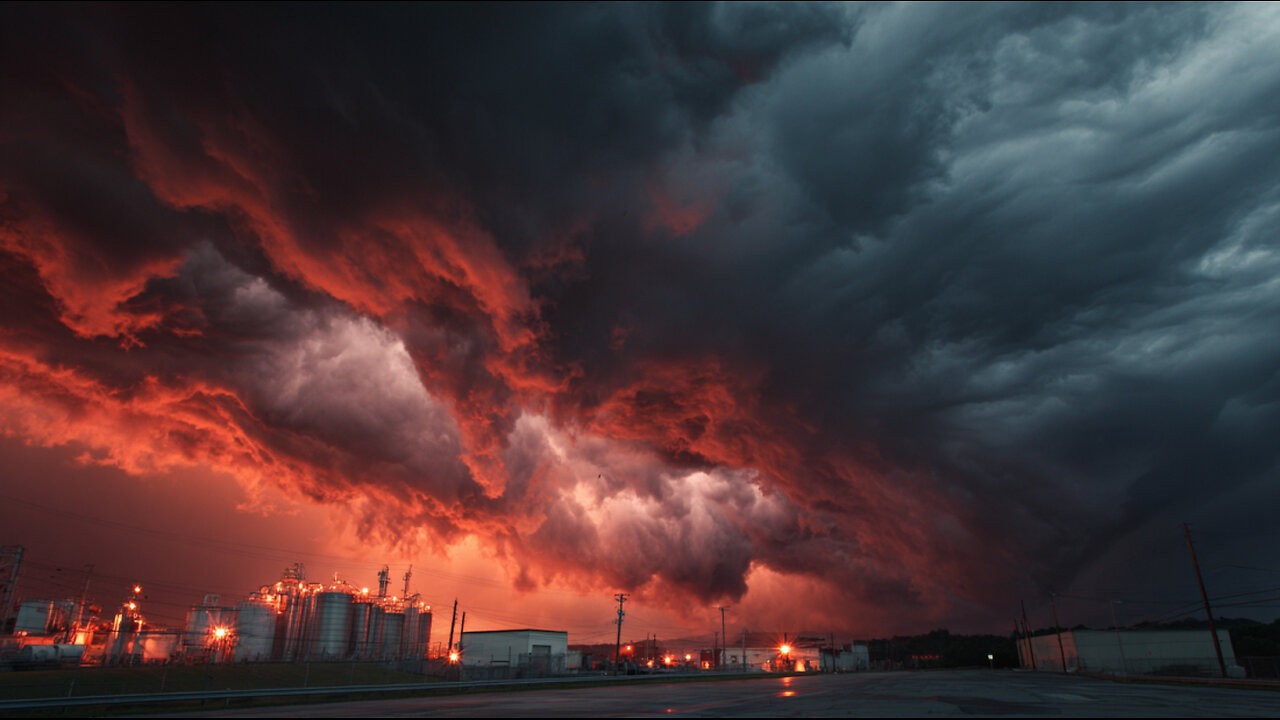Premium Only Content

Europe Shaken by Unprecedented Weather Anomalies: From Giant Hail to Tropical Downpours
On July 8, 2025, a powerful storm struck the city of Split, Croatia, far stronger than usual for the region. It caused significant damage to the city’s infrastructure, especially the port area, vital to the country’s economy. A ferry broke free from its mooring and collided with a tourist excursion boat, sinking it and damaging a catamaran. Fortunately, no one was injured.
In southern Poland, the storm’s rampage forced firefighters to respond to over 1,000 emergency calls in a single day.
The most affected regions were Podkarpackie, Silesian, Lesser Poland, and Lublin Voivodeships. More than 300 buildings were damaged.
On July 10, the storm hit western Ukraine, including Lviv, Volyn, and Ternopil oblasts. In Lviv, 4.34 inches of rain fell in just 12 hours — the heaviest downpour in the city's recorded history.
Streets were flooded, rivers overflowed, and residents were evacuated by boat. Over 44,000 households lost power.
A day earlier, on July 9, a tornado was recorded near Zhydachiv in Lviv Oblast.
The next day, July 10, squalls and large hailstones up to 2 inches in diameter hit Cherkasy and Kyiv oblasts, damaging cars, rooftops, and destroying crops and gardens.
In Kharkiv Oblast, a heavy downpour brought wind gusts of up to 45 mph. A tower crane collapsed, and a tree fell on a train, forcing emergency evacuations.
There were casualties: one woman was killed, and five others were injured, including a 7-year-old girl.
Starting July 11, northeastern Spain was hit by the DANA storm system, an upper-level low that usually forms over the Mediterranean in fall — but this time arrived in July, a climatic anomaly.
The city of Igualada in the Anoia district was especially hard hit — 3.43 inches of rain fell in one hour, with 1.06 inches falling in the first 10 minutes. The typical monthly average for July in that region is just 1.18 inches.
Flooding paralyzed rail transport — about 150 people spent the night at Sants Station in Barcelona.
A plane en route to the USA had to return after hail shattered its nose cone.
On July 12, a sudden hailstorm struck Vănători-Neamț, Neamț County, Romania. Within minutes, ice blanketed the ground and rooftops as if it were winter.
Visibility dropped sharply, and roads became dangerously slick. The temperature plunged from 86°F to 54°F in just ten minutes.
Since July 9, a severe storm swept across Belarus. Winds of up to 54 mph, along with thunderstorms and heavy rain, left 170 towns and villages without electricity.
Over 4,700 acres of forest were flattened, with 90% of the damage occurring in Mogilev Oblast. In Mogilev, a young woman died after a tree — under which she was sheltering — collapsed.
A tornado of EF2 strength tore through the village of Varkhi in Vitebsk Oblast, uprooting trees and ripping off roofs and even walls.
In Minsk, rain poured like a curtain, severely reducing visibility. Large hailstones damaged vehicles. Though meteorologists had warned of approaching storms, few expected such intensity.
On July 11, Latvia recorded its first-ever case of giant hail, officially entered into the European Severe Weather Database (ESWD).
In Palsmane, Smiltene region, hailstones up to 4.5 inches in diameter fell — the largest ever recorded in Latvia. The storm damaged roofs, cars, and solar panels.
From July 9 to 15, Russia was shaken by a series of weather anomalies.
In southern Pskov Oblast, a tornado, torrential rain, and hail the size of chicken eggs (up to 2 inches) caused extensive damage. Crews restored nearly 1,200 miles of power lines.
In Moscow and the surrounding region, extreme heat was replaced by tropical storms. Some areas were hit with hailstones up to 2.75 inches, while wind speeds at Sheremetyevo Airport reached 74 mph.
On July 14 and 15, Moscow was again hit by heavy storms — streets, subways, and underpasses were flooded. Lightning strikes caused fires in residential buildings across Moscow and the Moscow Region.
In the Samara Region, on July 12, a powerful storm tore off rooftops and uprooted trees. On the Volga River, a small boat capsized — a woman was killed, and five others were rescued. In a tent camp in Krasnoglinsky District, a tree fell on tourists, killing two people.
On July 14, in Tula Region, in the village of Bunyryovo, lightning struck wet sand on a beach. Three people, including a child, were killed instantly, and three more were injured.
A wave of violent storms — with intense winds, large hail, lightning, and torrential rains — also swept through Serbia, Slovakia, Hungary, and other European countries.
In his latest address, Dr. Egon Cholakian reveals a key factor contributing to the escalation of natural disasters: micro- and nanoplastics, which have already become climate-active substances in both the ocean and the atmosphere.
Find out more in the video:
“From Brain Damage to Infertility: How Nanoplastic Is Stealing Your Future”
-
 31:06
31:06
AllatRa TV
10 days agoThe Kamchatka “Anomaly” Is Only the Beginning of Global Catastrophes | Egon Cholakian
2322 -
 8:30
8:30
Millionaire Mentor
23 hours agoJames Comey PANICS After Pam Bondi Reveals What’s Coming Next
3006 -
 UPCOMING
UPCOMING
Jeff Ahern
26 minutes agoMonday Madness with Jeff Ahern
-
 8:07
8:07
Michael Heaver
3 hours agoBritain CANNOT Afford To Ignore This
39 -
 2:55:02
2:55:02
Right Side Broadcasting Network
5 hours agoLIVE REPLAY: White House Press Secretary Karoline Leavitt Holds a Press Briefing - 10/6/25
79.9K12 -
 1:00:32
1:00:32
Dear America
2 hours agoEp 4 Graham Allen Show
21.5K15 -
 1:01:37
1:01:37
Rebel News
2 hours agoCarney meeting Trump, Ostrich fight continues, Liberals budget promises | Rebel Roundup
8.97K11 -

Neil McCoy-Ward
1 hour agoBanks Now Ordered To SPY On Customers Accounts (UK Safety Act)
4.41K4 -
 1:30:40
1:30:40
NAG Podcast
20 hours agoSay Something Beyond W/MikeMac: PATRIOT ROB - Ep.8
7.67K1 -
 45:03
45:03
The White House
2 hours agoPress Secretary Karoline Leavitt Briefs Members of the Media, Oct. 6, 2025
21.1K22
